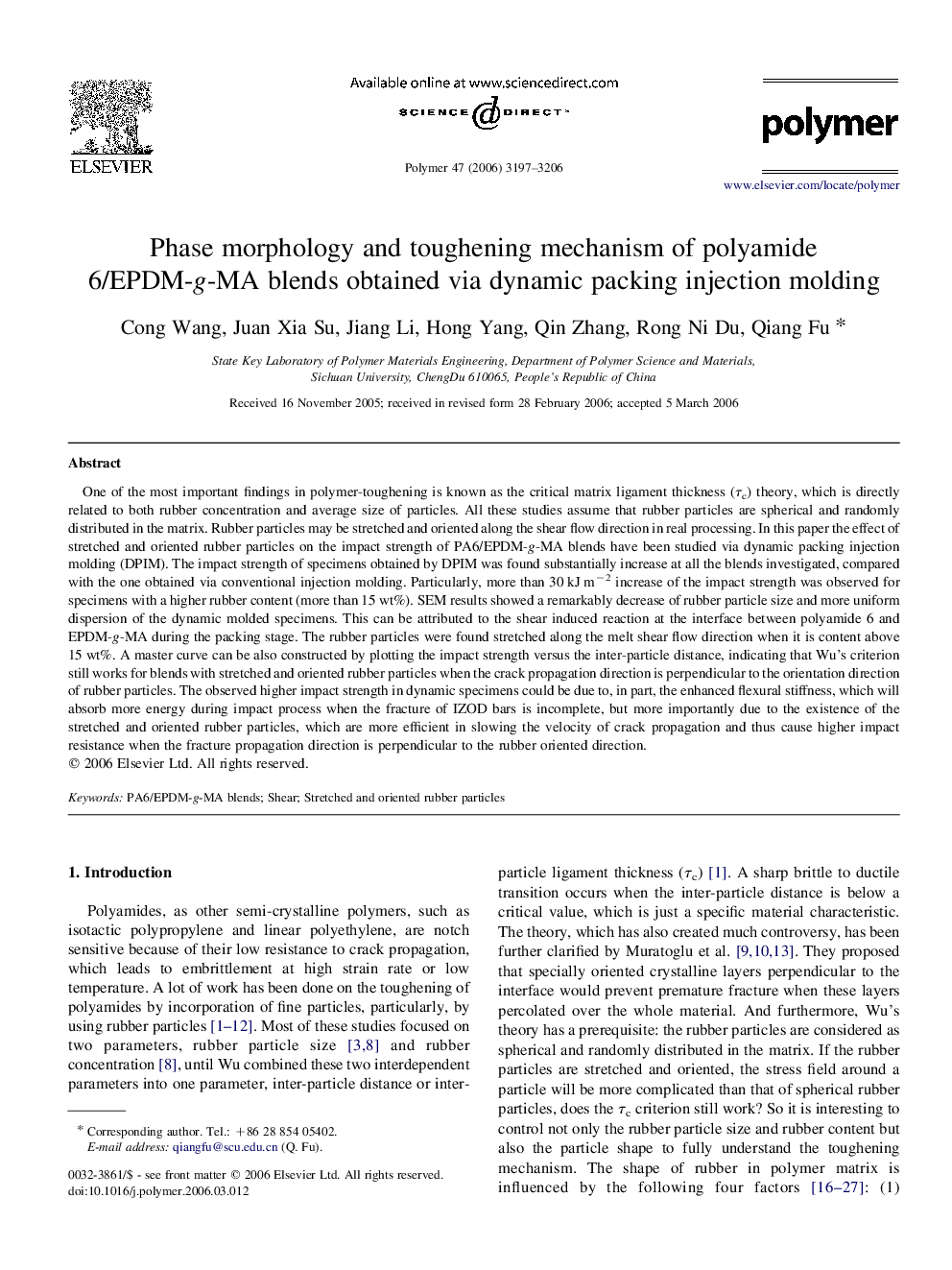| کد مقاله | کد نشریه | سال انتشار | مقاله انگلیسی | نسخه تمام متن |
|---|---|---|---|---|
| 5186369 | 1381102 | 2006 | 10 صفحه PDF | دانلود رایگان |

One of the most important findings in polymer-toughening is known as the critical matrix ligament thickness (Ïc) theory, which is directly related to both rubber concentration and average size of particles. All these studies assume that rubber particles are spherical and randomly distributed in the matrix. Rubber particles may be stretched and oriented along the shear flow direction in real processing. In this paper the effect of stretched and oriented rubber particles on the impact strength of PA6/EPDM-g-MA blends have been studied via dynamic packing injection molding (DPIM). The impact strength of specimens obtained by DPIM was found substantially increase at all the blends investigated, compared with the one obtained via conventional injection molding. Particularly, more than 30Â kJÂ mâ2 increase of the impact strength was observed for specimens with a higher rubber content (more than 15Â wt%). SEM results showed a remarkably decrease of rubber particle size and more uniform dispersion of the dynamic molded specimens. This can be attributed to the shear induced reaction at the interface between polyamide 6 and EPDM-g-MA during the packing stage. The rubber particles were found stretched along the melt shear flow direction when it is content above 15Â wt%. A master curve can be also constructed by plotting the impact strength versus the inter-particle distance, indicating that Wu's criterion still works for blends with stretched and oriented rubber particles when the crack propagation direction is perpendicular to the orientation direction of rubber particles. The observed higher impact strength in dynamic specimens could be due to, in part, the enhanced flexural stiffness, which will absorb more energy during impact process when the fracture of IZOD bars is incomplete, but more importantly due to the existence of the stretched and oriented rubber particles, which are more efficient in slowing the velocity of crack propagation and thus cause higher impact resistance when the fracture propagation direction is perpendicular to the rubber oriented direction.
Journal: Polymer - Volume 47, Issue 9, 19 April 2006, Pages 3197-3206